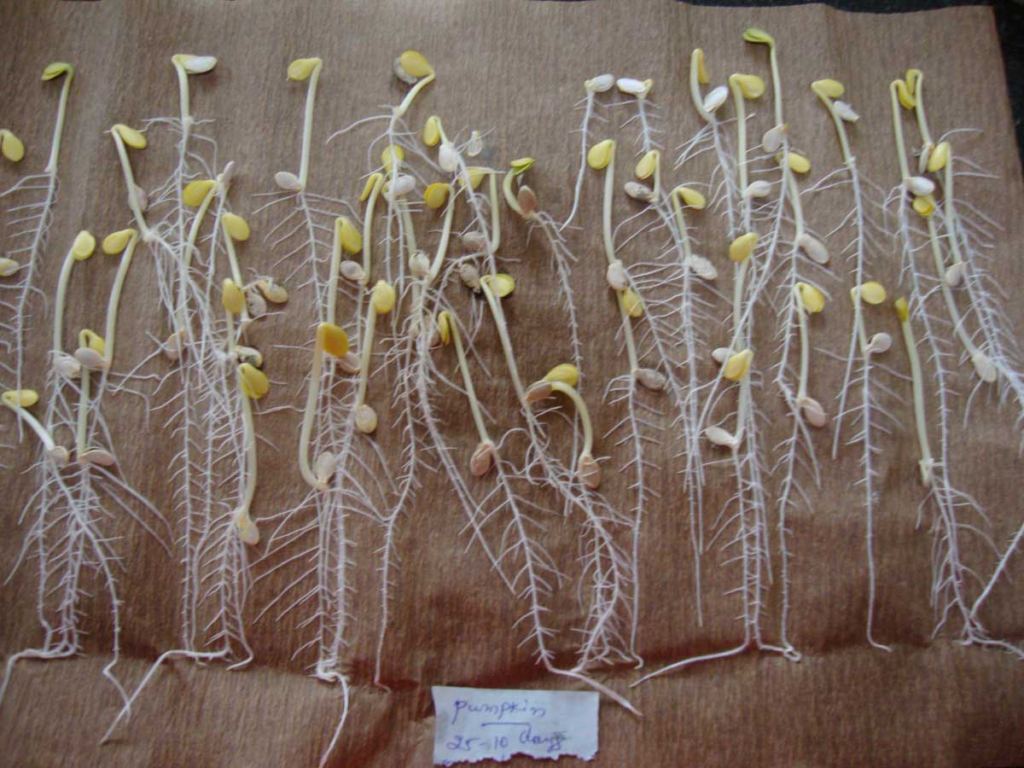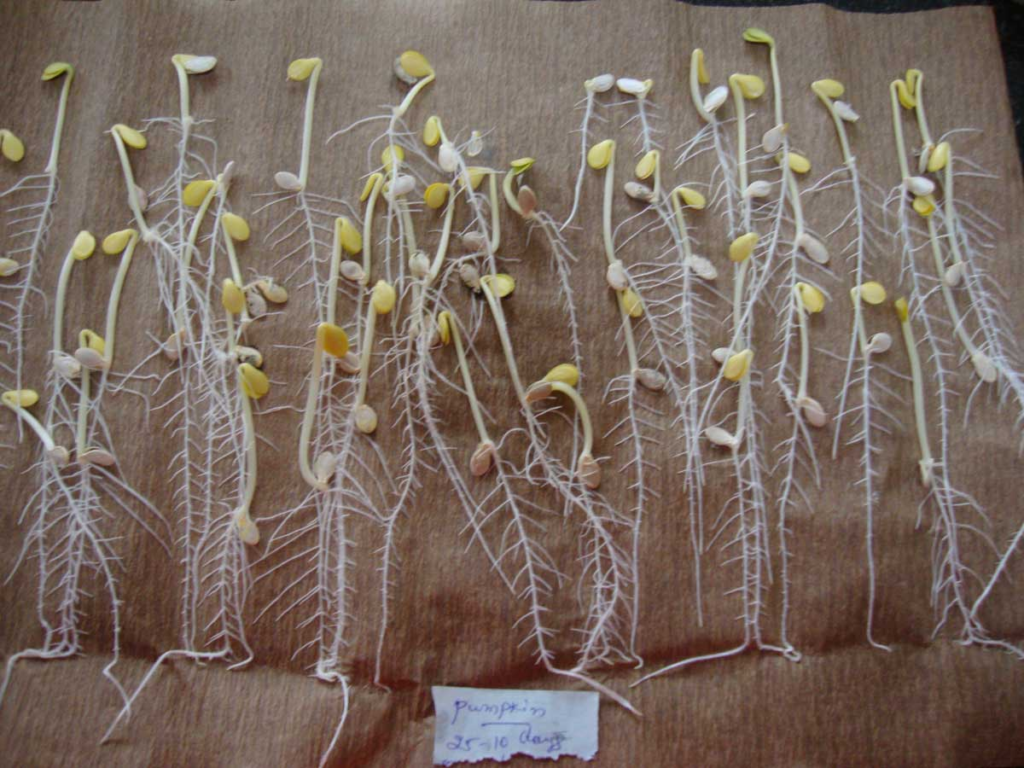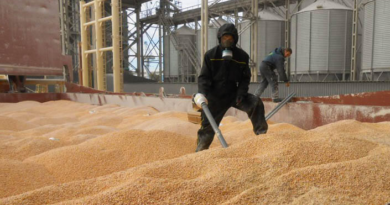Seed Analysis In-charge 6 month course
Seed Analysis In-charge

Seed Analysis In-charge handles seed testing for germination, seed strength and quality. Brief description of the work: Seed analysis on charge deals with seed germination germination, laboratory testing and other processes, by ensuring compliance with established standards. Your Qualifications: Seed Filter Management must have the ability to plan, organize and standardize. One must have reading, writing and communication skills Seed Analysis

Prepare and maintain work area and equipment for seed testing Seed Analysis:
In order to be effective, each user / individual must be able to: PC1. clean and maintain workplace hygiene using authorized cleaners and keep them free of dust, waste, and PC2 spills. ensure that the work environment is safe and clean from PC3 seed analysis. dispose of waste in accordance with SOP and sector requirements. check the operation and performance of all machineries and tools used in the process such as weighing scales, microscope, dressing room, oven, magnifier, seed dispenser, seed trier, sand sterilizer, moisture meter, etc. PC5. clean equipment and glassware used with complimentary cleaners in accordance with the definitions and standards of PC6 organization. to attend to repairs / minor equipment errors, if required PC7. arrange glass items and analysis equipment
Organizational Context (Knowledge of the company / organization and its processes):
The user / person at work needs to know and understand: KA1. organizational standards, process standards and procedures in the KA2 seed testing organization. business code of conduct KA3. dress code to be followed by KA4. job responsibilities / tasks and general seed testing procedures KA5. internal processes such as procurement, asset management, quality management and key communication solutions Seed Analysis



Technical Knowledge:
The user / person at work needs to know and understand: KB1. the types of chemicals, building materials and equipment needed to clean and maintain KB2. methods of cleaning all equipment KB3. supplier / manufacturer’s instructions regarding cleaning and maintenance of equipment KB4. Information on legal regulations regarding the workplace such as health and safety, recommended level of use of hygiene, control of health hazards, handling / storage / disposal / warnings on the use of cleaners and disinfectants, fire warnings, incidents, hygiene practices, waste disposal, environmental protection, etc.
Core Skills/ Generic Skills:
The user / person at work needs to know and understand how to do this: SA1. note the details referred to SA2. be aware of the raw materials used in production and finished products manufactured by SA3. note the reading of the process parameters and provide the necessary details to complete the SA4 process chart. note observations (if any) related to procedure SA5. write information documents to internal departments / internal parties SA6. write down ERP details online or through the organization’s Learning Skills The user / person at work needs to know and understand how to do it: SA7. read and interpret the process required to produce different types of SA8 products. read and interpret and analyze the flow chart of all SA9-produced products. read the equipment manuals and processing documents to understand the operation of the equipment and the required process SA10. read internal information documents sent to internal groups Oral Communication (Listening and Speaking Skills) The user / person at work needs to know and understand how to do this: SA11. discuss job lists, schedules and activities SA12. consult details of the procedure for variety / seed testing notices if SA13 is available. question to understand the nature of the problem and to clarify the questions SA14. listen to and understand the information provided by speaker SA15. liaising with departmental fraudulent teams on the issues they face during the process Seed Analysis
The user / person at work needs to know and understand how to do it: SB1. analyze critical points in daily activities by experience and observation and identify control measures to solve the SB2 problem. manage issues in case the administrator is not available (according to the authorization matrix defined by the organization) Plan and Edit The user / employee needs to know and understand how to do this: SB3. planning and planning work and activities have received SB4. arrange the materials and packaging materials required for all products following SB5 instructions. plan and focus on work based on the instructions received by SB6. plans to use SB7 for time and equipment. edit all process / equipment manuals for SB8 access details. to support the manager in organizing the services of assistants (i) Customer Customers The user / person on the job needs to know and understand how to do this: SB9. understand customer needs and priorities and respond according to their needs Troubleshooting SB10.support manager troubleshooting by identifying problems SB11.discipline possible solutions with problem solving manager Analytical Thinking The user / employee needs to know and understand: SB12. use domain information about maintenance procedures and technical information on tools and equipment Key considerations The user / employee needs to know and understand how to do so: SB13. use common sense and make daily judgments SB14. use consulting skills to identify and resolve basic SB15 problems. use the sensor to detect any problems that may occur during SB16 operation. apply the acquired knowledge of the process of identifying and handling issues Seed Analysis


Prepare for quality analysis and manage housekeeping for seed lab activities Seed Analysis:
In order to be effective, each user / individual must be able to: PC1. read and understand PC2 instructions. read and understand the standard operating procedure (SOP) for measuring each PC3 machine. measuring machines such as a weight scale, microscope, dressing room etc. record readings in PC5 rating register. manage and maintain tools (deadweights, measuring jars) and reagent (standard solutions) used to measure equipment that follows PC6 lab processes and standards. keep a list of all equipment and its PC7 calibration frequency. update the manager in advance on external measurement days, follow external labs and verify external equipment measurements during PC8. keep a record / file in external PC9 measurement reports. check the functionality and performance of all devices regularly with PC10. report any PC11 manager malfunctions / fixes. notify supplier / manufacturer of malfunctions / repairs and promptly fix PC12. keep a list of all equipment and details of PC13’s annual maintenance contract. track the annual maintenance contractor and ensure the maintenance of all PC14 equipment. record all details of laboratory equipment such as operation, errors, repairs, annual maintenance and so on in the equipment register and ERP Prepare seed laboratory operations agents To be competent, user / individual must be able to: PC15. read and understand SOPs by preparing each reusable PC16. measure the required chemicals and measure the solvents in the measured metals as well Seed Analysis
PC17 measuring jars. mix solvents with chemicals and maintain the necessary conditions following the process of preparing PC18 reagents. prepare solutions for PC19 machine equation standards. open the water supply unit and prepare the PC20 for distilled water. ensure the availability of refined water and standard solutions at all times PC21. store chemicals, solvents, acids, reagents etc. by following the manufacturer’s instructions (from the label) or by following the PC22 laboratory procedures and standards. keep a list of all chemicals, solvents, acids, reagents, glassware, materials, machinery etc. used in PC23 lab. check the chemical composition of the lab, glassware, consumables, equipment that can be stored from time to time in the register and erp and update the lab technician to PC24 status. prepare the necessary purchases of laboratory chemicals, glassware, consumables, equipment with the approval of management, and the process of demanding PC25. ensure and maintain a collection of all laboratory chemicals, glassware, materials, working equipment etc. clean glassware used for analysis with recommended detergents, disinfectants and PC27 sanitizers. clean and maintain used equipment following the equipment maintenance process To manage the maintenance of seed laboratory operations To be competent, the user / individual must be able to: PC28. read and understand SOP and PC29 house storage checklist. visit the laboratory regularly and make checks based on the PC30 housing checklist. understand the suggested corrective action PC31. make sure to set the PC32 prompt repair action. file PC33 maintenance checklist. keep records of all documents related to the maintenance work Seed Analysis
Organizational Context (Knowledge of the company / organization and its processes) Seed Analysis:
The user / person at work needs to know and understand: KA1. organizational standards, process standards and procedures in the KA2 seed testing organization. seed varieties considered by the KA3 organization. types of measurement equipment used by KA4 organization. business code of conduct KA5. dress code to be followed by KA6. job responsibilities / tasks and standard seed testing procedures KA7. internal processes such as procurement, asset management, quality
Technical Knowledge:

The user / person at work needs to know and understand: KB1. types of products produced in the organization KB2. equipment used in the laboratory and its KB3 storage process. frequency measurement equipment KB4. process for measuring each equipment KB5. types of chemicals used in the organization in the laboratory KB6. reagents required for measurement, material analysis, packaging materials and finished products KB7. The process of preparing all the reagents required for the analysis of raw materials, packaging materials and finished products is KB8. frequency preparation of the required reagents KB9. mathematical ability KB10. information on sanitizers and antibiotics and its methods for administering and maintaining KB11. various laboratory techniques KB12. GMP Seed Analysis
Core Skills/ Generic Skills:
The user / person at work needs to know and understand how to do this: SA1. note the details referred to SA2. be aware of the raw materials used in production and finished products manufactured by SA3. note the reading of the process parameters and provide the necessary details to complete the SA4 process chart. note observations (if any) related to procedure SA5. write information documents to internal departments / internal parties SA6. write down ERP details online or through the organization’s Learning Skills The user / person at work needs to know and understand how to do it: SA7. read and interpret the process required to produce different types of SA8 products. read and interpret and analyze the flow chart of all SA9-produced products. read the equipment manuals and processing documents to understand the operation of the equipment and the required process SA10. read internal information documents sent to internal groups Oral Communication (Listening and Speaking Skills) The user / person at work needs to know and understand how to do this: SA11. discuss job lists, schedules and activities SA12. consult details of the procedure for variety / seed testing notices if SA13 is available. question to understand the nature of the problem and to clarify the questions SA14. listen to and understand the information provided by speaker SA15. liaising with cross department teams on issues they are facing
Making a Decision A user / person at work needs to know and understand how to do it: SB1. analyze critical points in daily activities with experience and observation and find control measures to solve the SB2 problem. manage issues in case the administrator is not available (according to the authorization matrix defined by the organization) Plan and Edit The user / employee needs to know and understand how to do this: SB3. planning and planning work and activities have received SB4. arrange the materials and packaging materials required for all products following SB5 instructions. plan and focus on work based on the instructions received by SB6. plans to use SB7 for time and equipment. edit all process / equipment manuals for SB8 access details. to support the manager in organizing the services of assistants (i) Customer Customers The user / person on the job needs to know and understand how to do this: SB9. understand customer needs and priorities and respond according to their needs Troubleshooting SB10.support manager troubleshooting by identifying problems SB11.discipline possible solutions with problem solving manager Analytical Thinking The user / employee needs to know and understand: SB12. use domain information about maintenance procedures and technical information on tools and equipment Key considerations The user / employee needs to know and understand how to do so: SB13. use common sense and make daily judgments SB14. use consulting skills to identify and resolve basic SB15 problems. use the sensor to detect any problems that may occur during SB16 operation. apply the acquired knowledge of the process of identifying and handling issues Seed Analysis

Carry out sampling and seed testing activities Seed Analysis:
In order to be effective, each user / individual must be able to: PC1. read and understand PC2 sample examples. find the amount of seed in the laboratory for testing and testing and close the seed lot found in the containers / bags and mark the identification with a single PC3 name. determine the appropriate weight or quantity of seed required for analysis and draw a sample of the seed in the PC4 container. use equipment such as hand lens, magnifying light to separate seed samples from different types of PC5 seed varieties. verify the similarity of the seed sample for analysis. If there is further evidence of heterogeneity in the drawn sample, drop the sample PC6. read and understand the standard operating procedures (SOP) for the analysis of each PC7 sample. perform analytical measurements based on standard operating procedures (hand-made sample or traces / investigations, according to organizational standards) PC8. keep samples and in good condition PC9. after the sampling is complete, send the seeds for PC10 purity and germination test. perform a seed sample purity analysis to identify various purity factors such as pure seeds, other plant seeds, weed seeds and inert matter PC11. perform basic tests on body parameters such as color, appearance, texture, weight, count, etc. in PC12 seed samples. inspect a seed sample and / or with the help of a hand lens and a table lamp to check for inputs, other plant seeds, seeds and other variables PC13. filter the pure seeds from other PC14 substances. measure pure seed and inert matter separately and calculate your percentage of both PC15 separately. perform basic chemical analysis such as seed moisture content (to measure the moisture content of a given seed sample, use a hot air temperature method, by measuring seeds and crushing seeds)PC16. set the oven to the desired temperature depending on the type of seed, and then heat the seed sample in the oven for a specified number of hours, depending on the type of seed PC17. remove the seed sample from the oven and cool in the desserts until the seed sample reaches the PC18 lab temperature. check sample weight dropped PC19. determine the moisture content that separates the difference between the final seed sample weight after suspension and the first seed sample before suspension with the initial seed weight before PC20 setup. perform a germination test to determine the probability of the largest germination of a PC21 seed sample. draw the seeds in groups from the seed sample and place them on a moist substrate by separating them with PC22. place on the germination sheet after soaking in water on the PC23 sheet polythene sheet. place a pile of seeds under test on the germination sheet and cover the seed pod with a single wet germination sheet PC24. roll the whole assembly with polythene paper to form a towel, with rubber strips PC25. place the label inside the polythene cover with details such as PC26 kind / variety / lot noetic. insert a seed sample under controlled conditions depending on the type of seed PC27. perform two seed testing tests, take the first and last calculations after the completion of the recommended PC28 timeframe. during the first count, count only the normal seeds and write them down on the analysis sheets, allowing the remaining seeds to be reborn until the last counting day PC29. during the last count, count the remaining normal seeds and add to the first count. Also count unfamiliar seeds, dead seeds, solid seeds and new uncollected seeds and write in PC30 analysis paper. calculate the percentage of standard seeds, non-standard seeds, hard seeds and new uncollected seeds and report the final number of PC31. set and perform special seed tests (eg chemical color tests) to detect pests, empty seeds or seed damage, and to test the quality of all PC32 seeds. notify the person concerned if there may be a discrepancy in the PC33 analysis result. record the results in the quality analysis register and enter the results in the ERP PC34 program. clean and maintain used equipment, following equipment maintenance procedures Seed Analysis
Organizational Context (Knowledge of the company / organization and its processes) Seed Analysis:
The user / person at work needs to know and understand: KA1. organizational standards, process standards and procedures in the KA2 seed testing organization. seed varieties considered by the KA3 organization. business code of conduct KA4. dress code to be followed by KA5. job / activity obligations and standard operating procedures KA6. internal processes such as procurement, asset management, quality management and key communication solutions for the KA7 query. SOPs for equipment and analysis parameters Seed Analysis
Guidelines for Assessment Seed Analysis:
- Criteria for assessment for each Qualification Pack will be created by the Sector Skill Council. Each Performance Criteria
(PC) will be assigned marks proportional to its importance in NOS. SSC will also lay down proportion of marks for Theory and
Skills Practical for each PC Seed Analysis - The assessment for the theory part will be based on knowledge bank of questions created by the SSC
- Individual assessment agencies will create unique question papers for theory part for each candidate at each
examination/training center (as per assessment criteria below) - Individual assessment agencies will create unique evaluations for skill practical for every student at each Seed Analysis
examination/training center based on this criteria - To pass the Qualification Pack , every trainee should score a minimum of 70% in aggregate
- In case of successfully passing only certain number of NOS’s, the trainee is eligible to take subsequent assessment on the
balance NOS’s to pass the Qualification Pack Seed Analysis






